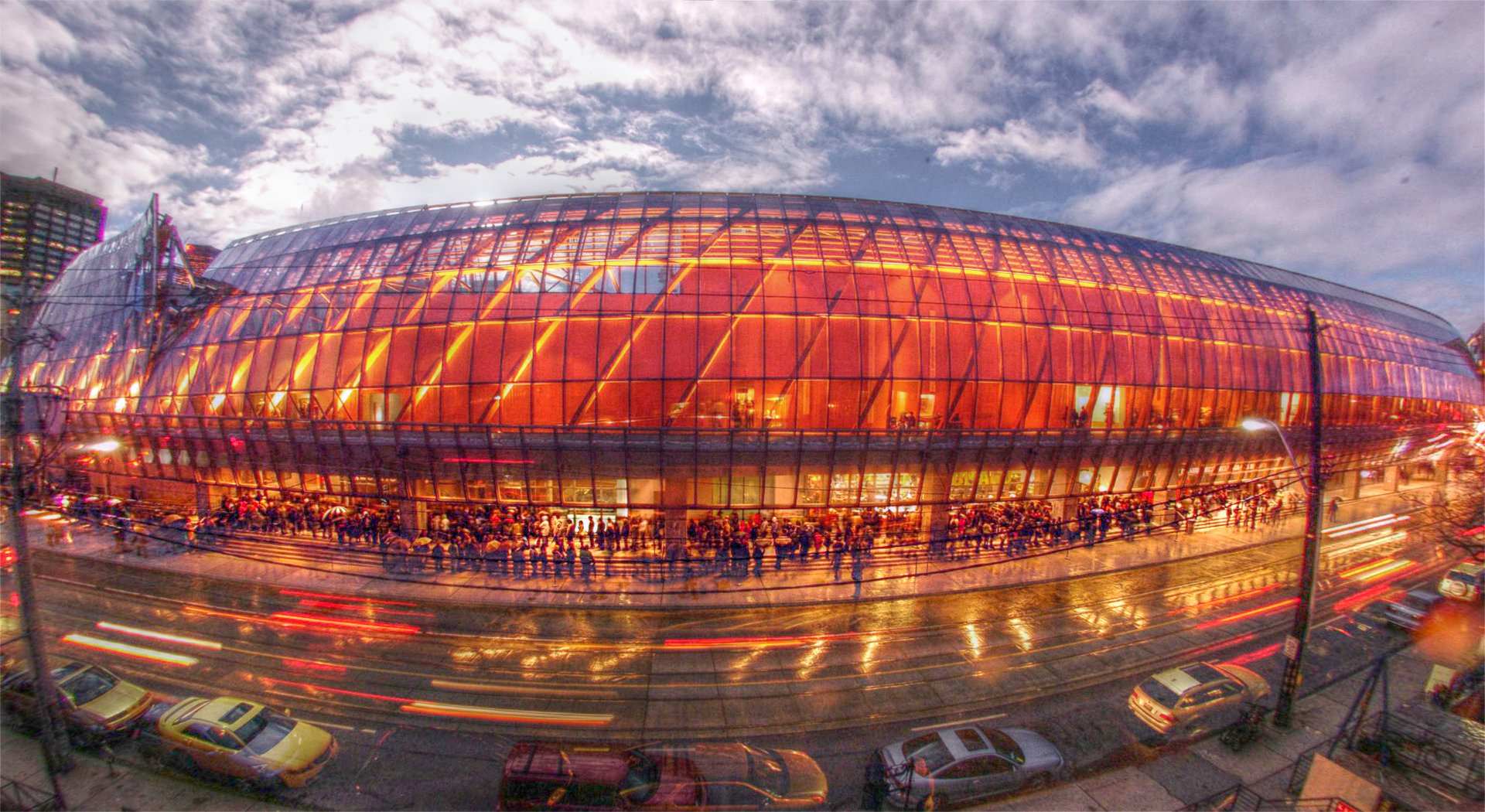 (version optimized for printing)
(version optimized for printing)
(This Ultra High Definition frame was reduced to standard HDTV resolution for compatability)

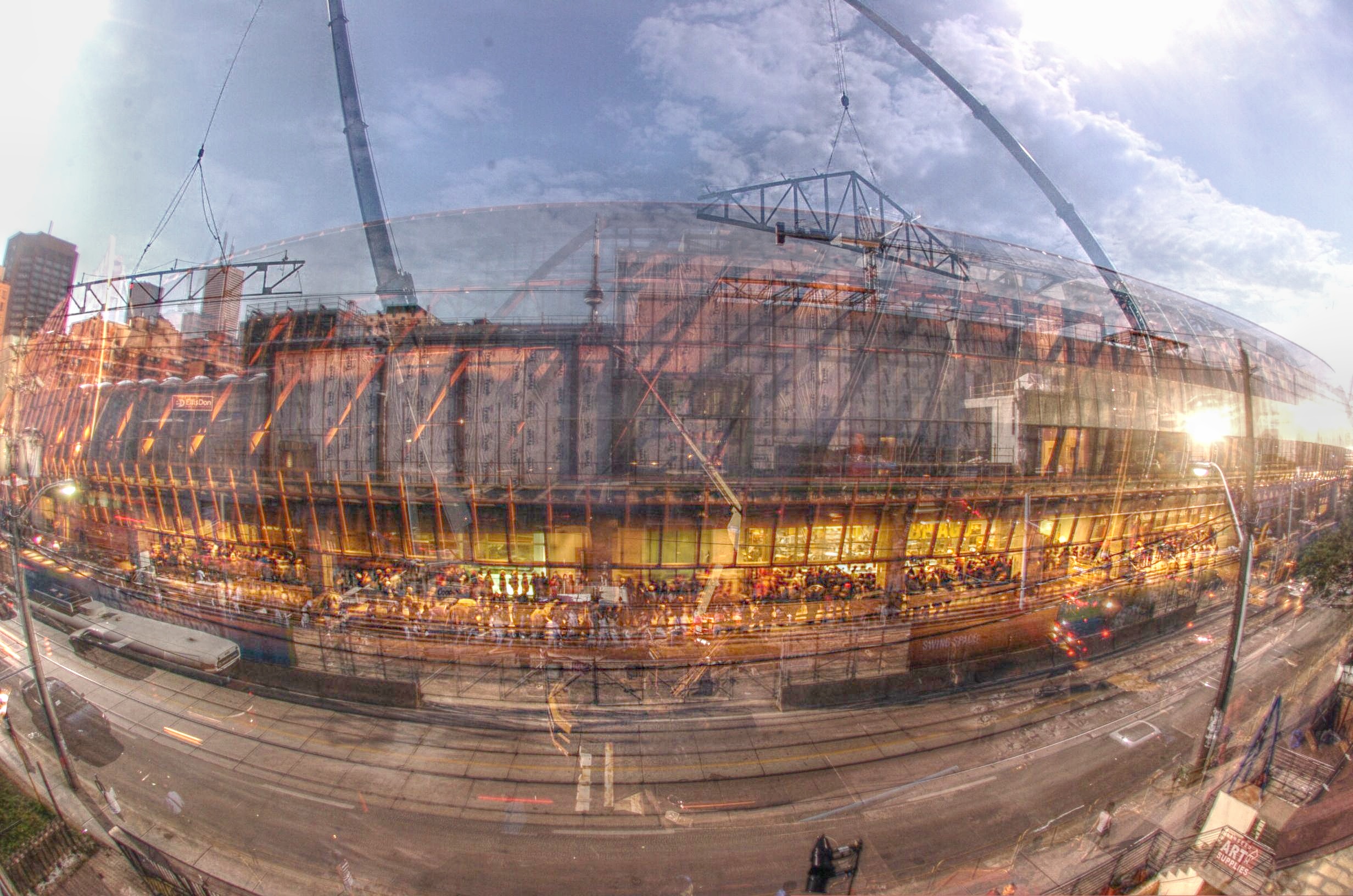 (version optimized for printing)
(version optimized for printing)
The film explores the passage of time through the medium of
long-exposure time-lapse inverse-holographic lightspace imaging,
patented by artist S. Mann.
The imaging system spans the entire rooftop of a building located directly across the street from the construction site of Frank Gehry's Ken Thomson-funded Art Gallery of Ontario (AGO) Transformation construction site.
The 24 foot-long holographic table/rail with high-speed Ultra High Definition imaging systems captured (and continues to capture) lightspace (inverse holograms) with our Gigapixel Ultra High Definition imaging system for the production of a UHD-TV film and series of photographic and inverse holograhic stills entitled "YEARS AGO", shot entirely in 192-bit-per-pixel-color-depth.
The system uses a custom made inverse-holographic undigital camera system for which the YEARS AGO project director Steve Mann has been awarded patents in a number of different countries around the world.
Mann's system gives infinite dynamic range and captures the breathtaking interplay between light and shadow and temporal transitions by an array of high speed lightspace cameras running day-and-night over the past 5 years.
The result is the makings of a dramatic film as well as a series of creative photographic lightvector paintings (print media, etc.). Other tangible works of art can include holographic and inverse-holographic prints on glass plates, for laser or white-light viewing in a gallery setting, as well as an interactive art installation that uses a custom-made simulated holographic/inverse-holographic video display intended for installation in a gallery or museum setting.
YEARS AGO is an artwork, by world reknown artist Steve Mann, in inverse-holographic lightspace imaging, using undigital media, to capture the passage of time, space, and light, in which an entire building functions as a lightspace camera. Mann is currently working together with designer Chris Aimone, to complete production of the Ultra High Definition film YEARS AGO, as well as to design a series of related interactive artworks to propose for permanent installation in a museum or gallery space.
Mann's work has been shown in numerous galleries and musems around the world, including the useum of Modern Art (MoMA in New York), Stedelijk Museum (Amsterdam), Triennale di Milano, Austin Museum of Art, San Francisco Art Institute, the Smithsonian Institute, National Museum of American History, and The Science Museum (Wellcome Wing, opening with Her Majesty The Queen, and His Royal Highness The Duke of Edinburgh).
Mann is also a commercial photographer and filmmaker, having shot for such notable clients as Draftfcb, Foote Cone & Belding, Levi Strauss, and has shot numerous magazine covers and large-scale gigapixel photographic works.
Additionally, he is the inventor of inverse-holography (OPTICS LETTERS, Vol. 20, No. 24, Dec. 15, 1995) and worked in the lab at the Massachusetts Institute of Techology (MIT) where holographic video was invented.
An exhibit of Mann's lightvector paintings entitled "Microseconds and Years", was recently shown in Toronto, at Olga Korper Gallery http://wearcam.org/microsec/olgakorp.htm
This exhibit dealt with timelapse and passage of time, while using as subject matter, the space best known for "stopping time", namely Harold Edgerton's studio where Mann also worked.
Mann, as the inventor of lightspace time-lapse imaging, has been awarded patents in numerous countries around the world.
Additionally, he is the inventor of High Dynamic Range (HDR) imaging (US Patent 5,828,793), which is now widely used in film production.
Mann is also the inventor of electric eyeglasses (laser-eyetap) and computational seeing aids, and other assistive computer vision technologies.
His cybernetic photography work (http://en.wikipedia.org/wiki/Steve_Mann) which he has patented in France, UK, Japan, United States, and Canada, was featured at Toronto International Film Festival (wearcam.org/cyberman.htm), in a film that was described by filmmaker and critic Peter Wintonnick as "the most important Canadian film this year - a film that stands at the crossroads of form at the intersection of old and new." It was also rated by Globe and Mail (2001 Thurs. Sept. 6th, page R6) as third best movie out of 350 movies submitted to Toronto International Film Festival.
In addition to being notable for his work in timelapse imaging, Mann is a sculptor whos works include the main centerpiece out in front of the Ontario Science Centre, an interactive stainless steel, bronze, and brass sculpture that's about 20 feet tall and 33 feet in diameter, and is also a musical instrument that can be played by any member of the public, 24 hours a day.
As founder of the MIT wearable computing project, Mann has been a "cyborg" for more than 30 years, and now leads a community of more than 30,000 photographic cyborgs: (http://glogger.mobi)
Steve Mann has written 139 research publications, books, patents, and has been the keynote speaker at more than 25 scholarly and industry symposia and conferences, and has also been an invited speaker at more than 50 university Distinguished Lecture Series and colloquia, as well as a speaker at the prestiguous Kodak Lecture Series.
Mann is currently working together with designer Chris Aimone to complete this production.
Example with a simple stereo pair:
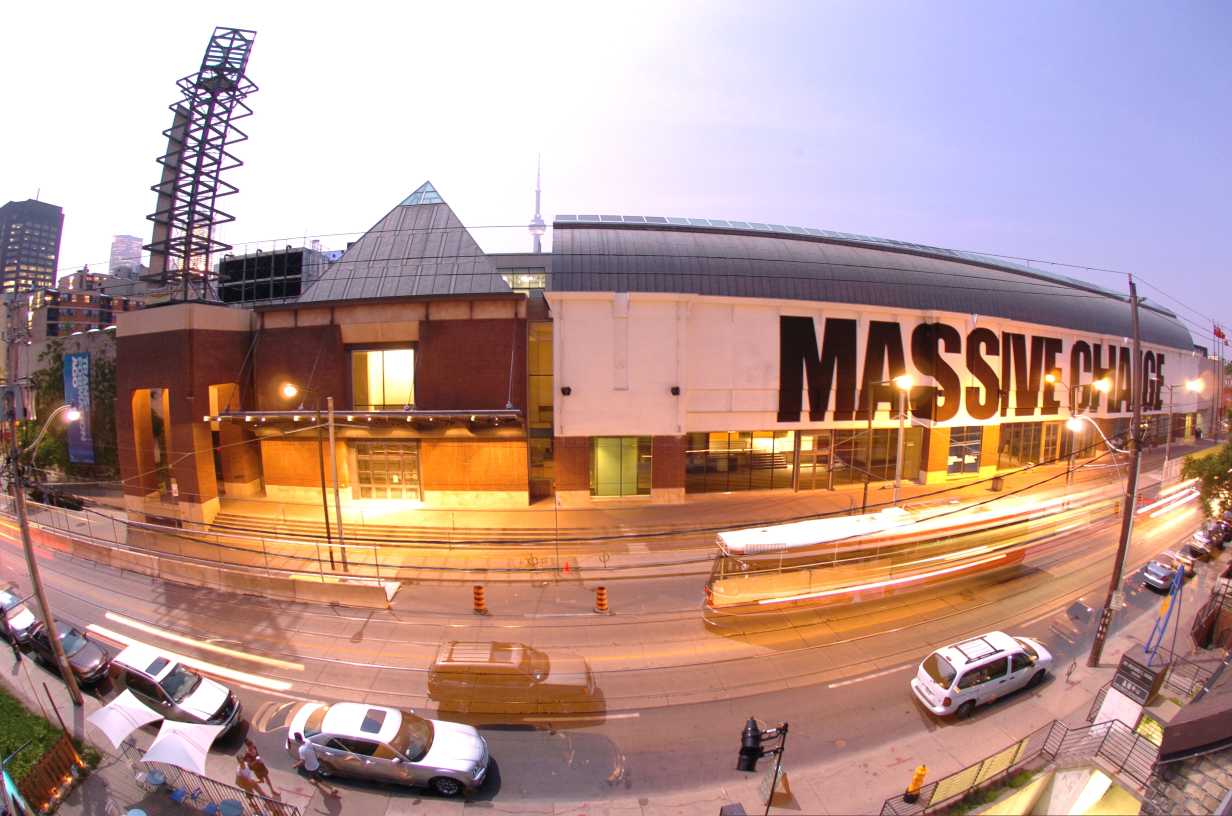 (left)
(left)
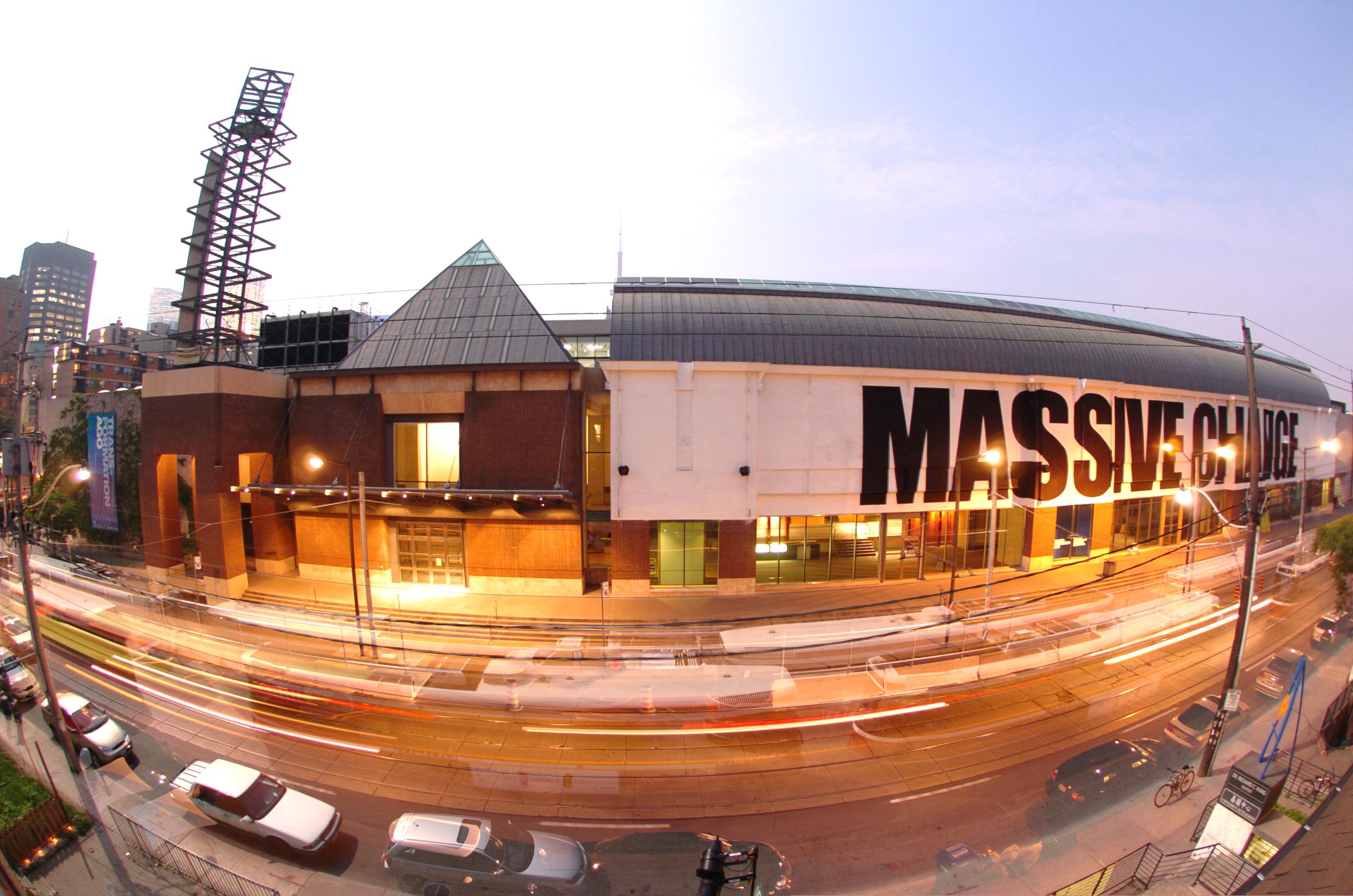 (right)
(right)
(Click stereo holographic camera LEFT to enlarge to full size)
We're also creating a work in virtual reality for being viewed on a virtual reality headset to be able to look back in time, etc..
Time-lapse lightspace imaging from a small size Newport holographic optical table mounted on a 24 foot long optical rail, set in 12 inch thick cement framing, directly across the street from the Art Gallery of Ontario (AGO).
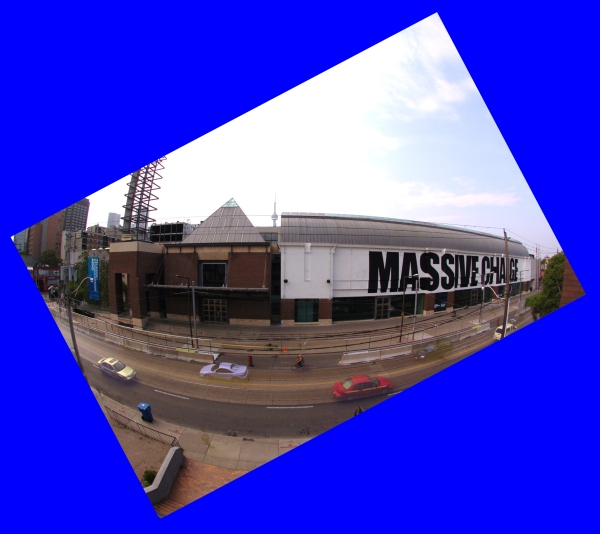
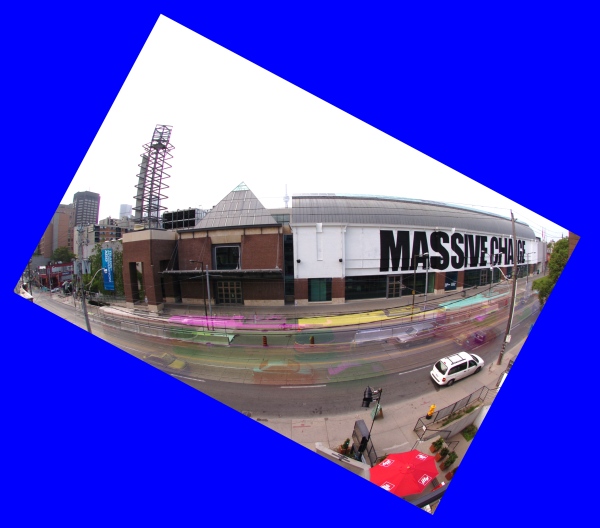
For other examples of time-lapse lightspace imaging as an art form, see http://wearcam.org/dusting as well as http://wearcam.org/microsec/
Professor Steve Mann, Director, EyeTap Personal Imaging Laboratory (ePi Lab) University of Toronto 10 King's College Road, Toronto, Ontario, M5T 1G5
Studio (330 Dundas Street West) = 416.593-9330 Office = 416-946-3387 Lab = 416-946-5321 Fax = 416-971-2326 email: mann@eecg.toronto.edu
Cell = 416.854-0258 email: caimone@gmail.com